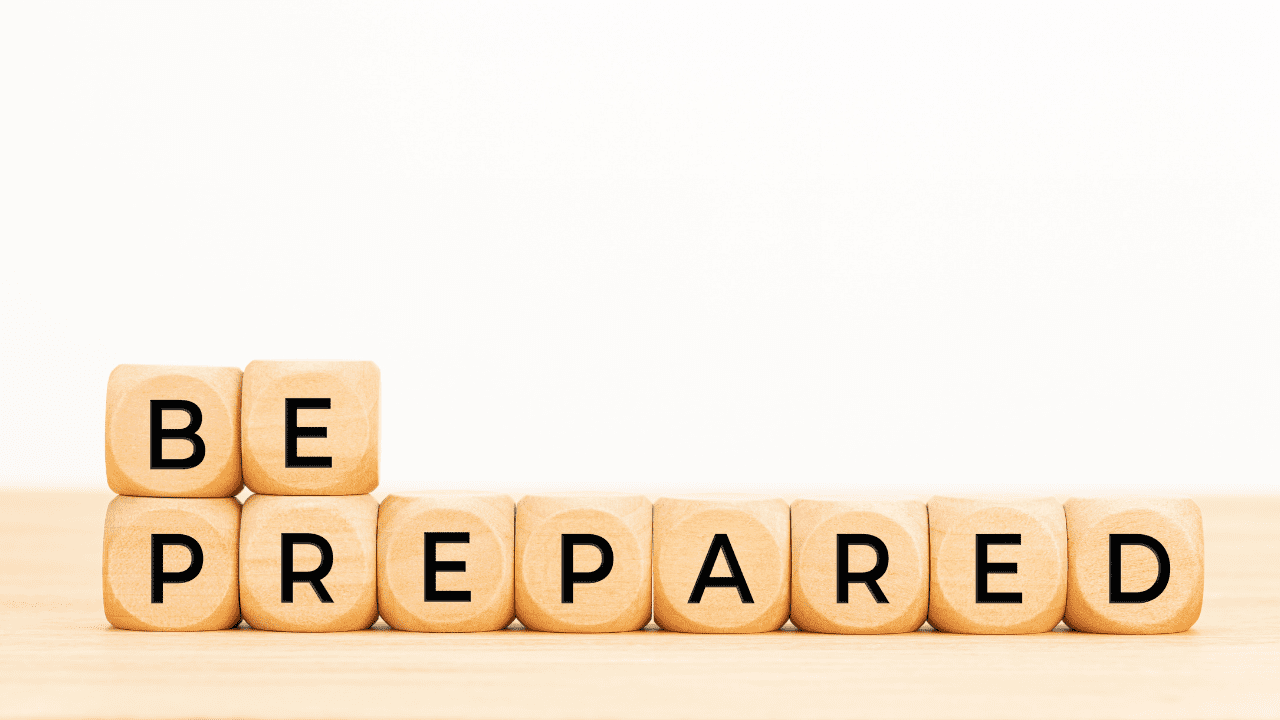
Education can help people to be prepared without paranoia, but how do you teach safety without causing fear? There are specific things to be aware of in an extraordinary situation like an active shooter that can fundamentally change the outcome.
Today’s guest is Dr. Kathleen Kiernan. Dr. Kiernan is the founder and CEO of Kiernan Group Holdings, Chair of Emeritus and the Intelligence and National Security Alliance, and an adjunct faculty member of the Center for Homeland Defense and Security at the Naval Postgraduate School. As a 29-year veteran of Federal Law Enforcement, Dr. Kiernan serves as a subject matter expert in strategic thinking, strategy development, and facilitating critical incident management exercises for senior leaders across government and private sector organizations. She is the founder of Preparedness Without Paranoia which provides an opportunity to use a lifetime of service and earned experience at the extremes of human behavior to help others invest in their own security and preparedness. When they teach skills early, they can last a lifetime and can literally save lives.
“Preparedness should be universal.” - Dr. Kathleen Kiernan Share on XShow Notes:
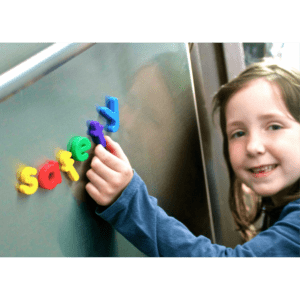
- [1:21] – Dr. Kiernan has spent her entire life in or supporting law enforcement. Her experience has given her understanding of human behavior.
- [3:04] – Dr. Kiernan recommends the book called The Safety Trap by Spencer Coursen and shares a story from it to illustrate how children are not prepared by their parents.
- [4:39] – There’s not one single event that interested Dr. Kiernan about preparedness, but rather her multitude of experiences in law enforcement.
- [7:03] – Regarding an active shooter situation, there is a series of actions to take.
- [8:18] – Preparedness Without Paranoia educates children on these actions they can take in a way that is developmentally appropriate.
- [9:18] – Civics is not a class taught anymore. Preparedness Without Paranoia uses current and recent events to educate.
- [10:33] – The program is written by parents and educators for parents and educators of primary school aged children.
- [11:58] – Dr. Kiernan’s program teaches a preparedness mindset that applies to many different types of events.
- [13:01] – You are responsible for your own security.
- [14:20] – Communication is the first major teaching point for children in Preparedness Without Paranoia.
- [15:41] – Although active shooters are statistically rare but devastating, there are more common events in domestic violence and abuse that children learn to communicate about.
- [17:19] – To build trust with kids is to be part of their adventure. What are they into?
- [19:32] – Dr. Kiernan and Chris discuss preparedness kits and checklists and getting kids involved.
- [22:10] – Have the discussions of why each item goes into the preparedness kit and introduce the idea of going to a shelter in times of natural disasters.
- [24:06] – Dr. Kiernan shares a realization she made that preparedness can be simple.
- [27:30] – One of the most common and vexing to teach about is human and sex trafficking.
- [28:54] – Using the example of an Olympic athlete who spoke up about sexual abuse as a child. Communication is key.
- [30:27] – Some of the educational resources on Preparedness Without Paranoia’s website surround good decision making and thanking community heroes.
- [31:20] – Preparedness Without Paranoia runs on donations. All donations go directly to resource production. You can contribute HERE.
- [32:22] – In addition to donations, Preparedness Without Paranoia is in need of authors and illustrators.
- [33:18] – All resources are free and available on the website.
Thanks for joining us on Easy Prey. Be sure to subscribe to our podcast on iTunes and leave a nice review.
Links and Resources:
- Podcast Web Page
- Facebook Page
- whatismyipaddress.com
- Easy Prey on Instagram
- Easy Prey on Twitter
- Easy Prey on LinkedIn
- Easy Prey on YouTube
- Easy Prey on Pinterest
- Preparedness Without Paranoia Home Page
- Kiernan Group Holdings Home Page
- Kiernan Group Holdings on Facebook
- Preparedness Without Paranoia on Instagram
- Kathleen Kiernan on LinkedIn
Transcript:
Can you give my audience and a little background about who you are and what's behind your passion for preparedness?
Sure. I have spent my entire life to date supporting our law enforcement and the intelligence community. It's just something I'm very passionate about and wanted to do since I was a small child, and in that process, learned a great deal about human behavior. That has driven me to create Preparedness Without Paranoia to bring some capabilities to kids and families about preparedness and resilience.
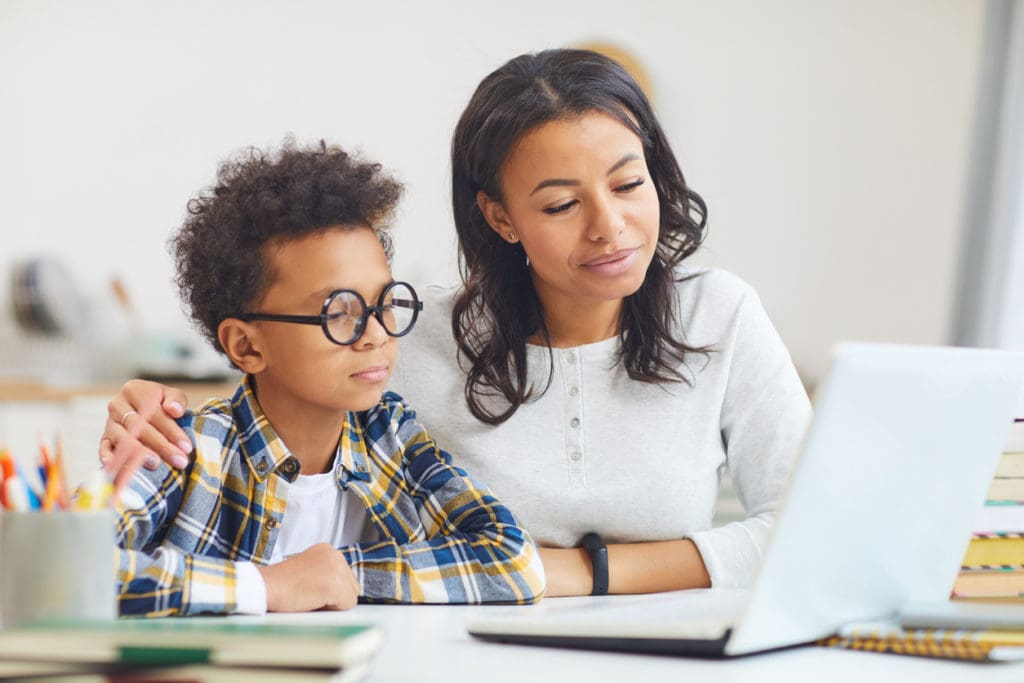 What I learned is that we often speak around our kids; we don't speak to them or listen to them. My goal here in Preparedness Without Paranoia was to invest them in their own safety and security.
What I learned is that we often speak around our kids; we don't speak to them or listen to them. My goal here in Preparedness Without Paranoia was to invest them in their own safety and security.
That's interesting because we talked about talking around kids. I think back to my youth and I grew up in the stranger danger days where kids were not told what to be concerned about strangers but were just told all strangers are dangerous. If any stranger comes up to you, you better run because your life matters, and some stranger is going to do something awful to you.
That's kind of my growing up, not that I was paranoid about it, but no one told us why to be cautious of strangers or what specific behavior we needed to watch out for. Is that what you're working against, that blanket just freak out?
Chris, I grew up with that same type of advice, and I would quote here, which I hope you could get him on. But Spencer Coursen has written a great book about The Safety Trap, and he’s written for a magazine as well. He gives you a great story about a little girl that was lost in Central Park. She found herself sitting on a bench and different people went by and when they did find her, thank goodness she hadn't been harmed. They said, “Why didn't you ask for help?” She said, “I was told not to speak to strangers.”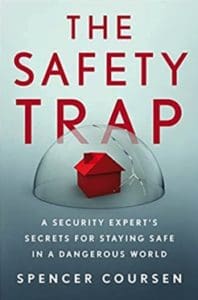
Imagine that the outcome could have been drastically different. Spencer took a pretty good perspective on this since the […]. It’s an evolution from stranger danger. If you are lost or need help, if you see somebody wearing a uniform, go to that person. You see someone serving food, go to that person. Generally, if it's a restaurant, you’ll have the restroom, a safe haven, a telephone, or a family with children is likely a safe person to go to for help.
It takes that fear away from asking someone you don't know if you're lost in the crowd, lost in the park, lost in the shopping mall. I thought it was a brilliant way to explain this.
I love that because it doesn't just tell them what to watch out for, but here's what you should do. Here's how to get help. Here's how to find something that's more likely going to be safe to go after. Was there a particular event that got you interested in preparedness or was it just because of your law enforcement background?
That's an interesting question. Everything has me interested in preparedness and resiliency because when you are law enforcement, you're always responding to critical incidents. You speak to any law enforcement officer and they’ll say you go from 1-100 in a minute. It's usually because there's been a behavior that isn't acceptable in society.
In that case, that means, “Can you prepare people to respond appropriately?” I'm going to give you one specific example. In my organization, we've had the privilege of teaching active shooter preparedness response and recovery from the Department of Homeland Security. We've done that for so many years.
What we found through that experience is that the average time it takes for law enforcement to respond to a critical incident, such as an active shooting event, is six to eight minutes. Everybody thinks, “Gee, that's a long time.” But you think about that. The event is starting to happen. Somebody needs to be able to get to a phone, call law enforcement, explain where they are, what's happening. That dispatcher has to clarify the information, dispatch it. Law enforcement has to receive that, deploy, make entry.
By the time that happens, oftentimes, all the shooting is finished. Injuries and fatalities have already occurred. There are always exceptions. There are some that come immediately to mind. The Aurora Theater was 90 seconds. The Washington Navy Yard was five minutes.
But on average, it takes a little bit longer. In that time—six to eight minutes—there’s an intersection of fear and fact. If people essentially don't know what to do or hesitate, there's a high likelihood that they'll become a victim instead of a survivor.
If people don't know what to do or hesitate, there's a high likelihood they'll become a victim instead of a survivor. -Kathleen Kiernan Share on XPart of our effort here was to get people at that intersection of fear and fact, give them the right kind of information to make a quick decision and act. Again, reduce that likelihood of becoming a victim.
Let's talk through a couple of different situations here. With respect to an active shooter, what are the things that people should be doing in that first six to eight minutes?
Let's talk about the Department of Homeland Security method of run, hide, fight. That is an opportunity to understand that when something happens—in my way of explaining it, I’d say an ordinary day turns extraordinary. You have a series of actions to make. You can run away from the danger if there's a safe way to do that versus running into it. You can hide if there's a safe way to do that. You can fight as the last resort.
What we spent a lot of time explaining is this isn’t linear. You may have to fight right away if the threat is ever-present in front of you. You may have to hide, you may have to run. We don't memorize that as much as we would memorize something. You also learn this in kindergarten: stranger danger; stop, drop, and roll.
If there's a fire, you're on fire. You're going to stop, drop to the ground, and roll to put the fire out. We had to convince people that run, hide, fight is the right series of things to do, but not to do them in series. Then we realize that kids might not necessarily understand run, hide, fight, particularly ages four to eight.
Part of what we're doing in Preparedness Without Paranoia, which is where we started—the response to active shooter events—is to teach kids in a developmentally appropriate way what that really means. If you have to run, run as fast as you can. If you have to hide, be the hide-and-go-seek champion.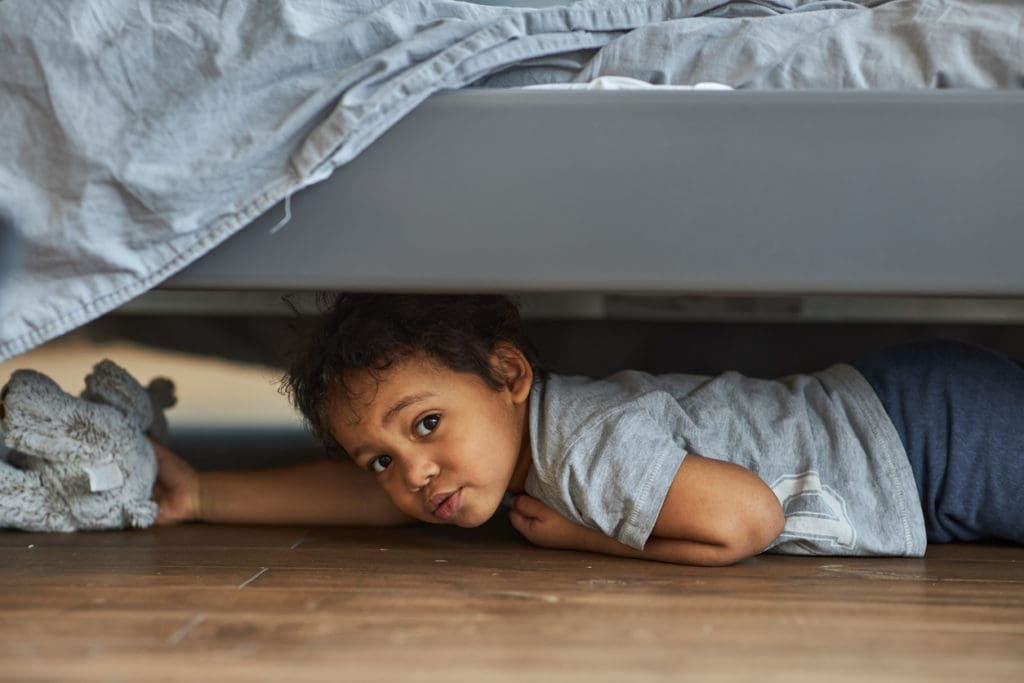
If you have to fight, there's a lot of things around you you can use to protect yourself. We wrote a series of activities, books to teach kids what to do and how to do it to take away that fear. They have been very popular, and then those evolved to teaching kids how to understand and interact during a pandemic when everything in the world changed.
After the pandemic, and what's happening in terms of big national events, our latest book is on civics. Something else is something you learned as a young person in school—you went to a civics class. I know I did. I’m an educator. We generally do not see civics taught in the classroom anymore. We're using some national events to explain what happens and basically helping young kids understand good behavior.
How difficult is that? I'm not in child development; is it particularly difficult in trying to determine what is age-appropriate? I think what you teach as a high school kid in terms of run, hide, and fight is obviously significantly different than what you teach a four-year-old.
You're exactly right. Here's the good news: I'm surrounded by an extraordinary team of educators. Folks that have spent 25, 30 years in primary education. Many have achieved academic proficiency with PhDs in child development, in psychology, in early learning, pharma, and all the kinds of things to make sure we get it right.
If we’re bringing a resource to parents and families from the classroom to the boardroom, you want to make sure it's right and it's accurate. The worst thing you can do is give someone misinformation.
If I could take a second, the magazine we do, Parents With Preparedness, is written by parents for parents. It's accompanied by sincerely just an amazing resource guide with practical information and resources. It cuts through that overwhelming amount of data on the internet and says, “Here, you want to know about this? Go here. Here's your authoritative source. Here's the Department of Education, your Department of Homeland Security, your Center for Disease Control.”
They don't have to search around. They can go and find what they need when they need it, and it talks about how to apply it and how to have those hard discussions.
That's great. In addition to an active shooter, what are some of the other core preparedness areas that you teach?
We teach about developing a preparedness mindset. No matter what the threat is, is it a natural disaster? It could be at the hand of man/women, criminal or terrorist event—floods, tornados, hurricanes, active shooter, criminal activity? For the adults in the magazine, there's a lot about domestic abuse, workplace violence, and the like.
If we can develop that preparedness mindset, remember that point about the intersection of fear and fact. You know what to do, how to do it. We all accept that danger is universal. Preparedness should be universal too. I had lots of discussions with parents that will say, “My kids don't need this. They're protected at school. They're protected at home.” And I said, “OK, what happens when the kids go off on a field trip, they go visit a grandparent, and they leave for college? Can you be assured that the same protections are in place?”
We all accept that danger is universal. Preparedness should be universal too. -Kathleen Kiernan Share on XThen you get that look and they'll say, “OK, now you have my attention. So how do we do it?” I'll say, “You develop those skills of preparedness and resiliency early in decision making, and it’s something they'll carry throughout their lifetime.”
That's great. What are some of these mindsets involved around preparedness?
Understanding that you are responsible for your own security, that you have an active role for your own security. Again, I'm older than you, Chris. I'm guessing as a kid, you always thought, “Well, I have to write things in place. I know not to talk to strangers. I know if I catch on fire, God forbid, I’m going to stop, drop, and roll. I know that my parents will look after me, my neighbors will always keep an eye on me, and I'm safe in school.
A lot of those things have gone away. We're not as involved as a society as we were when we grew up when doors were unlocked and you could be sure that somebody was always keeping an eye on you. It's having an idea that you can invest in your own security.
I'll tell you how we do it metaphorically. When I was a little kid, I was one of those that always had the flashlight under the covers, and I was reading books on Nancy Drew. I stole all of my brother's books on the Hardy Boys because I wanted to be a criminal investigator. Guess what? I grew up and was able to do that.
We use that idea that kids want to learn. They want to solve a mystery. They want to be superheroes. They want to be that firefighter, international spy, astronaut—all of those things. They want an adventure in life, so we give one that sense of adventure, but we tie it to security. The basic things that they need to think about and one of the biggest ones are communication and trust.
Let's start with communication. Something is wrong in life, what do you do? What do we teach our kids? Boys don’t cry and girls shouldn’t tell. Then as they get a little bit older, they’re thinking, “Gee, something bad is happening, but I don't want to be looked at as a fill-in-the-blank. I don't want to be looked at as weak.” So they don't tell anybody.
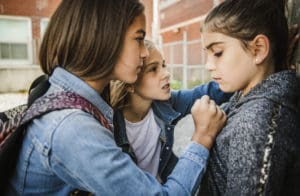 There's a national study, and it was reported by the Pew Foundation, the Secret Service, and the FBI also used it. It’s about 90% of the cases of school violence, the kids knew something was going on. In many cases, kids knew who's planning to do what, but they're afraid to tell. You know that old adage of snitches get stitches. I don't want to be excluded. I don't want to not be a cool kid so they don't tell. You can't turn the clock backward after these acts of violence occur.
There's a national study, and it was reported by the Pew Foundation, the Secret Service, and the FBI also used it. It’s about 90% of the cases of school violence, the kids knew something was going on. In many cases, kids knew who's planning to do what, but they're afraid to tell. You know that old adage of snitches get stitches. I don't want to be excluded. I don't want to not be a cool kid so they don't tell. You can't turn the clock backward after these acts of violence occur.
So we talk to kids in a developmentally appropriate way. That it is OK to say if something’s wrong, you're afraid, or you see somebody—one of your colleagues, one of your kids—is in distress. Active shooters are really statistically rare, but always devastating when they occur and always make the national news.
Kids might be coming from a home where there’s trouble. They might not have enough food to eat. There might have been abuse. There might be some bullying going on. It might be some sexual touching going on. All those kinds of things. We're giving the kids the confidence to find their voice and use it to tell a trusted adult. Tell a teacher, tell a parent, but tell somebody, and it's OK. That's part of investing and being the super kid.
We use an adjective—superpowers—and give kids what is a superfriend, what is a superkid, what is superconfidence. All of those kinds of things. We make them their own superheroes.
We’re giving kids the confidence to find their voice and use it to tell a trusted adult. -Kathleen Kiernan, Preparedness Without Paranoia Share on XI suppose the flipside of that is parents and adults—we need to be trained to listen. When kids want to share something, we don't shut them down. That we don't say, “Oh, tell me that later. That's not important.” But when we see something's stressing the child or even adults, we need to take that time and listen and find out really what's going on.
Really listen, build the trust, and not be critical and say, “Oh, I’ll take care of it. Invest in their investment in telling you and build that trust.
What are some of the ways we can build trust both ways between kids and adults and adults and kids?
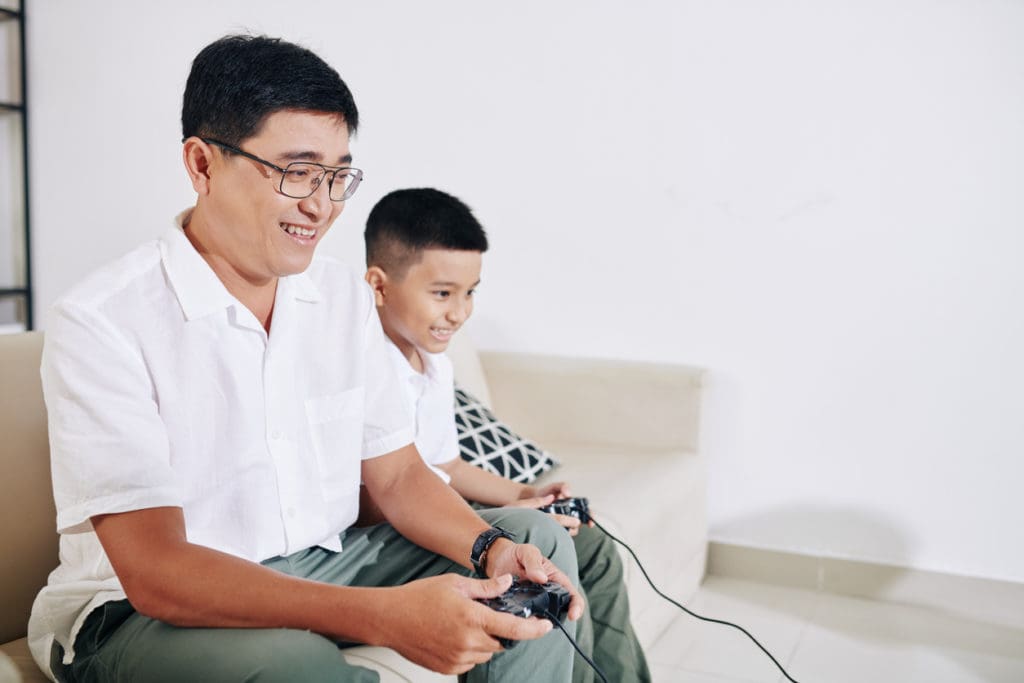
Communicate with your kids, doing things they are interested in.
Start communicating. Think about what kids do, be part of that adventure. Kids are on online gaming—be part of that online gaming. You're probably going to lose. You may lose all the time, the kids are going to be better every single time, but they know you're interested.
Play a board game. It gives an opportunity to have a discussion about other issues. Have it as part of preparedness Monday at your home. Post some of the superpower rules on your refrigerator door. Give kids reminders. If you look at our website, which is pwporg.org, we have the ABCs of preparedness, and they're all narrated, which was done by one of our employees in lots of fun. She has a brilliant voice to do this.
For A, super attention. You challenge your kid to say, “Listen, let's talk about what attention really means.” Now give me an example of how you used that two or three times today when they go to school or they are at home. Then here's the fun part, Chris, the child gets to turn around the opportunity to ask the parent. The parent is then engaged when they use super attention or they didn’t.
In a sense, you can have fun and say, “Well, I was trying to get your attention and you didn't listen to me.” You can have fun, but here's the key: Have fun while you're learning and have that ongoing communication.
I grew up in Southern California. We’re always told to watch the Big One, in reference to the earthquake that is coming. It's now been almost 50 years and we haven't had The Big One yet, but we’re always taught, “Here's the Big One.” To me, as I grew older, I just did camping and stuff like that. Part of what I did was always, “I'm going to put together an emergency preparedness kit. Here are the things I'm going to put in.”
This really makes me think that we should be doing that with our kids and explaining not, “We're doing this because we're afraid of an earthquake, but here's why we're putting extra water in here. Here's why we’re putting a change of clothes. Here's why we're putting X, Y, or Z in our emergency preparedness kit,” so they actually understand what they're being prepared for and how these things are actually used.
Chris, I think you're reading my email. Sincerely, I just published an ebook on cyber safety and the idea that child predators never take a summer vacation. We have an article about that, we just published a free downloadable ebook. The next one, which will come out Monday, is all about preparedness kits. One of the keys there is investing kids, having conversations, what goes in, remembering what to put in for your pet too because a pet is part of your family.
One of the things in the checklist is the preparedness mindset. We talk about medicine can expire, food can get outdated, but a preparedness mindset never goes out of date. We give an essential and again it's a free resource. It's a tutorial about why you should have a go kit and a preparedness kit, what you should put in it, and have the kids invest in it.
Medicine can expire, food can get outdated, but a preparedness mindset never goes out of date. -Dr. Kathleen Kiernan Share on XThey should put in things that they are going to need besides the change of clothes, the batteries, the flashlights. There are hygienic products, there are extra chargers for your electronics, there is stuff for your pets—all of those kinds of things. We made it fun, attractive, and the kids get to almost compete with what should go in there and why.
I like that. We will definitely make sure that the workbook, worksheet, that training becomes available—we’ll link to it in the show notes, that way parents can do that exercise with their kids. I really like that because I think it gives a great opportunity to talk about it. I'm not in education, but I like that concept of educating through natural things in life.
We put the batteries in the emergency kit, but we need to replace them so often because batteries degrade over time. There's an opportunity to talk about chemistry, an opportunity to talk about things breaking down. I think it's easy for kids to understand that food spoils, so you can draw those analogies. You leave around too long, it goes bad. The same thing happens with technology. The same thing happens with batteries. We need to make sure we replace those so they're fresh and they're able to do their best to help us when there's an emergency.
As awkward as it sounds, let's make sure we put toilet paper in, and let's make sure we put wipes in and other sanitary products that people might need. Why are we going to do that? But if you think about it and you have a discussion, it takes away the awkwardness of the discussion for basic human behavior. If you're in a shelter, what do you do if you can’t get to the shelter? What does shelter in place mean to kids?
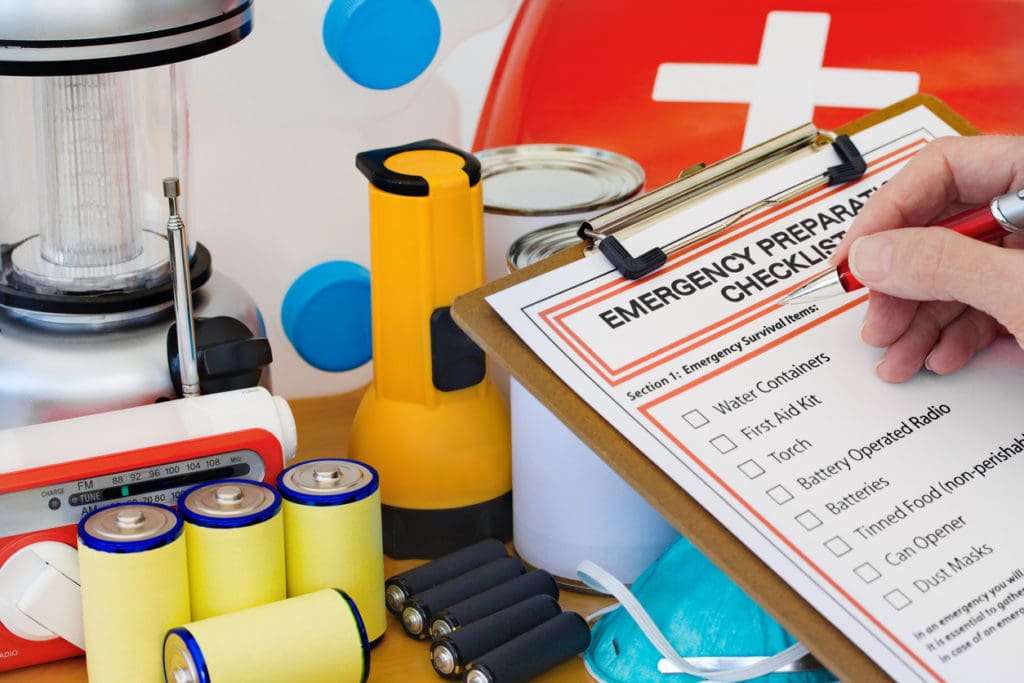
Prepare by checking off the items on the emergency preparedness list.
We do a whole vocabulary saying this may be a new term, but this is what it means. Then they get to decide, “Where will I go in my house if I need to shelter in place? Will I go to the living room in front of the windows?” No.
Those kinds of ideas so kids get invested in. We actually go do a fun project of essentially color me secure where kids can do a coloring contest and win a prize using the lesson they learned from the Lucky the Preparedness Dog. We're ready to do one of those for the summer.
I like that. You can even do a hide-and-seek. Hide where you go if there's an earthquake, hide where you go if there's a tornado.
There you go. There's your preparedness mindset. When you're not at home and you're traveling, what happens when you're at the airport? What happens if you're in summer camp and your parents are not with you? What happens when you're on a train and something happens; what are you going to do?
I think the real trick is doing that preparedness without the paranoia. The intersection of fear and fact is not trying to scare them about life, but prepare them for life.
Indeed. I learned a lesson many, many, many years ago in Israel and it was in the early stages of suicide bombings. Of course, that technology has changed and adversaries have changed as well, but there was a simple thing that occurred and it was they whistle.
A person would whistle and if you heard that whistle no matter where you are or what you are doing, you drop to the ground because the idea was the explosives would go out. Explosives, not to get technical, go out the 360-degree arc. But if you drop to the ground, you're less likely to be impacted by it.
It was something that was so simple, it didn't require any technology or anything else. It was just to understand that when you hear that, do this. That was the idea. Can we come up with any universal things to do when something happens—that ordinary day turns extraordinary—you know what to do.
I have a question: what's the reference to the whistle on that?
It was just when you heard that sound, that meant there's something, there is a threat and it's local or nearby, drop to the ground.
So it was police, law enforcement, someone in authority was blowing the whistle?
A common citizen making a whistle to say trouble, danger. Now, technologies evolve, and I said adversaries evolved. Those that might be a suicide bomber do things differently, but I was so struck by the fact that people accepted that this is what I should do.
We thought dangers are always going to be part of our lives, what are the universal things we could teach people? That is opening them to their own security, that it's your responsibility as much as it's someone else's. Help will come. In our law enforcement world, we always say, “The cavalry is coming.” But in that […] of time between something happening and law enforcement coming to that sound and place of danger, what are you going to do as an individual?
As importantly, what are you going to do when law enforcement comes? You're not going to run towards them. We're there to stop the danger, then they're there to help you secondarily. Teaching people that and particularly teaching kids.
Is it run the direction that the law enforcement is coming from and get behind them, but don't interact with them?
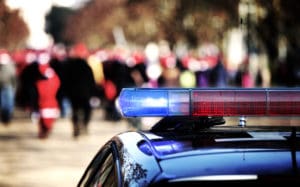
It's important to stay in place until an officer tells you it's safe to move around.
Absolutely not. It is stay in place until you get direction from the law officer because their job is to mitigate that threat. Let's talk about an active shooter. Say the shooter is still alive. They haven't either left—which is unusual—killed themselves—which is the usual—or waiting for the confrontation with police. The law enforcement's job is to mitigate the threat, stop the threat. Stay where you are if you're in that scene and then they will take care of you and bring you first aid.
If you're locked into a room and somebody says come out, you're not going to come out until you recognize the person that's asking you is a law enforcement officer.
Let them do their job, stay out of the way, and then when they say it's all clear, then you can come out.
They will bring all the resources to help you.
That is great. Are there any particular events that you provide teaching on? We've talked a lot about active shooters and a little bit about natural disasters, are there any other specific ones?
Probably one of the ones that's most vexing is human trafficking and sexual predators. I know you've had a lot of guests that have talked about that, and I have a lot more to bring in that are experts in the field. We spoke about it briefly prior to the interview.
The human trafficking business is a $150 billion industry. Think about that for a second: $150 billion. The National Center for Missing and Exploited Children reported in 2020 they had 26,500 reports of missing and exploited children. Those were reports, Chris, which means that's probably a low number.
I assume that's just in the US?
Yes, and one in six victims of child sex trafficking average age about 15. I know you interviewed Dr. Johnson and she talked about one in four girls and one in 10 boys will be sexually abused before they are age 18. Think about that for a second. What if you talked to the kids about what is that and what should you do when it happens.
Margaret Hoelzer, the world-class Olympian swimmer who was gracious enough to write for our Parents With Preparedness magazine. In fact, she's the cover in Edition 4. She was abused as a young girl, age four, by her best friend's dad. One of those threats, hidden in plain sight. She told her mother and then, of course, law enforcement got involved. But instead of being a lost kid, she channeled that experience into athleticism, in sports discipline, and she's a three-time Olympic champion medalist and an inspirational speaker. It's putting words around that experience and explaining it so that we can prevent more bad experiences from happening.
I also think that if something like that does happen, it doesn't define a person.
Indeed. You wouldn’t think about Margaret, the world-class Olympian, as a sexual abuse victim, but she talks about it because she wants to inspire those young kids—boys and girls—to make good decisions.
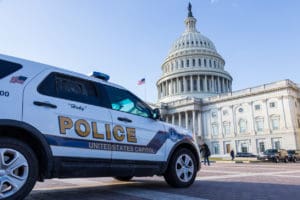
We work closely with the Washington, DC police foundation.
We work very closely with a lot of organizations, but the Washington DC Police Foundation is a case in point. They're extraordinarily active in the community where the police officers are working with families and kids. We're partners, we give them the prepared resources. That comes from donations and we are then able to donate lots of books. The kids, including the Chief of Police, get to interact with police officers and reading circles. They meet the K9s in the K9 unit, most of whom look like Lucky, by the way. They talked and we wrote a book about this.
How do you thank your heroes through the pandemic? All those folks that are on the front line. It wasn't just about the pandemic. It was about teaching kids about police officers, firefighters, emergency managers, nurses, and doctors. Getting them to think about making decisions at a young age would allow that career to be an option for them rather than making a bad decision and not having that option later on.
Yep, that's great. Kathleen, I super appreciate you coming on the podcast today. I know that charitable organizations and entities doing what you guys are doing are sorely in need of donations. How can people donate to your organization?
Thanks for asking that. I love what I do and I'm really awful at asking people for money. Here I am asking people for money. We do have a donation button on the site. Everybody that works with us does so as a volunteer. The money goes directly to producing the books and magazines and distributing them.
We did a series of masks for little kids and other stuff. Folks volunteer, but we need money to build and distribute the resources. It's really give a dollar, make a difference. I hope you give more than a dollar. But if you go to the website, there's a large button that says, “Please donate,” and that would help us tremendously.
The website is pwporg.org?
It is.
Can they also find your organization on social media?
They can—on Facebook and on LinkedIn. You know what we need besides money? We need authors. We need folks that want to share their experience. We need illustrators. We need folks that want to make a difference and teach others to have those important conversations.
We publish magazines quarterly and gosh, this one we just put out, I published it on solstice day, the longest day of the year. My joke was because it was the longest magazine to date. When we started we said, “OK, we’re only going to have six articles.” I think we have 15 in this one because so many people want to write.
That's awesome. I'm glad that you already have so many people wanting to contribute. I'm sure some of our listeners either themself would be willing to contribute or know people who they can encourage to contribute.
Indeed. Read the magazine, share it, it's free. It's downloadable. At some junction, we’ll get a printed copy so that we could put it in pediatric offices and in any places that kids and families are going to go. Right now, it's a digital magazine. The ebook on cyber safety and child predators is online and free—emphasizing free—and one on kids’ preparedness kits and family preparedness kits will be up on Monday.
Awesome. We will link to all of those resources in the show notes.
Marvelous.
Kathleen, thank you so much for coming. I really appreciate you. I share your passion with the audience.
Thank you very much, Chris.
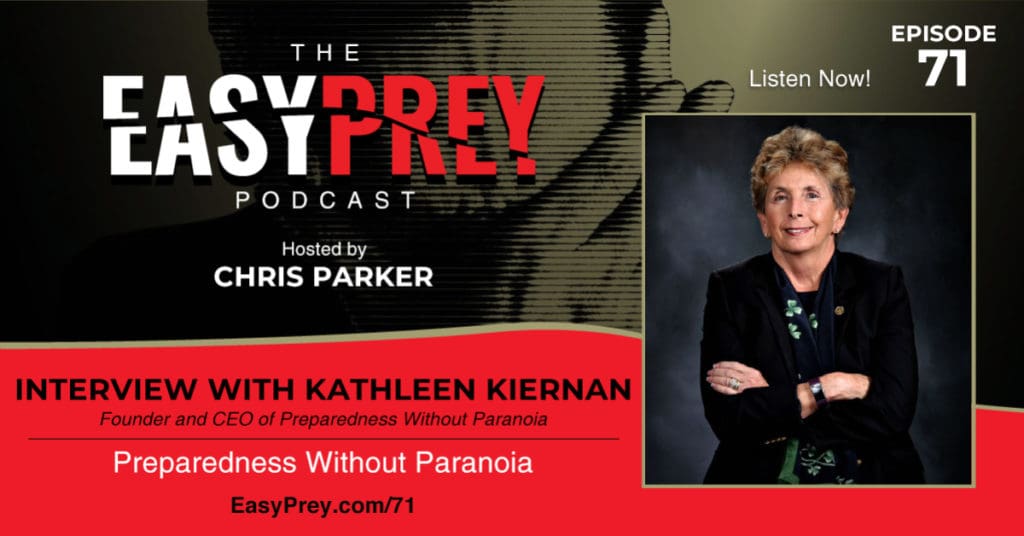
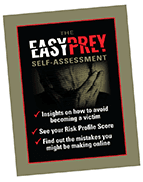
Leave a Reply